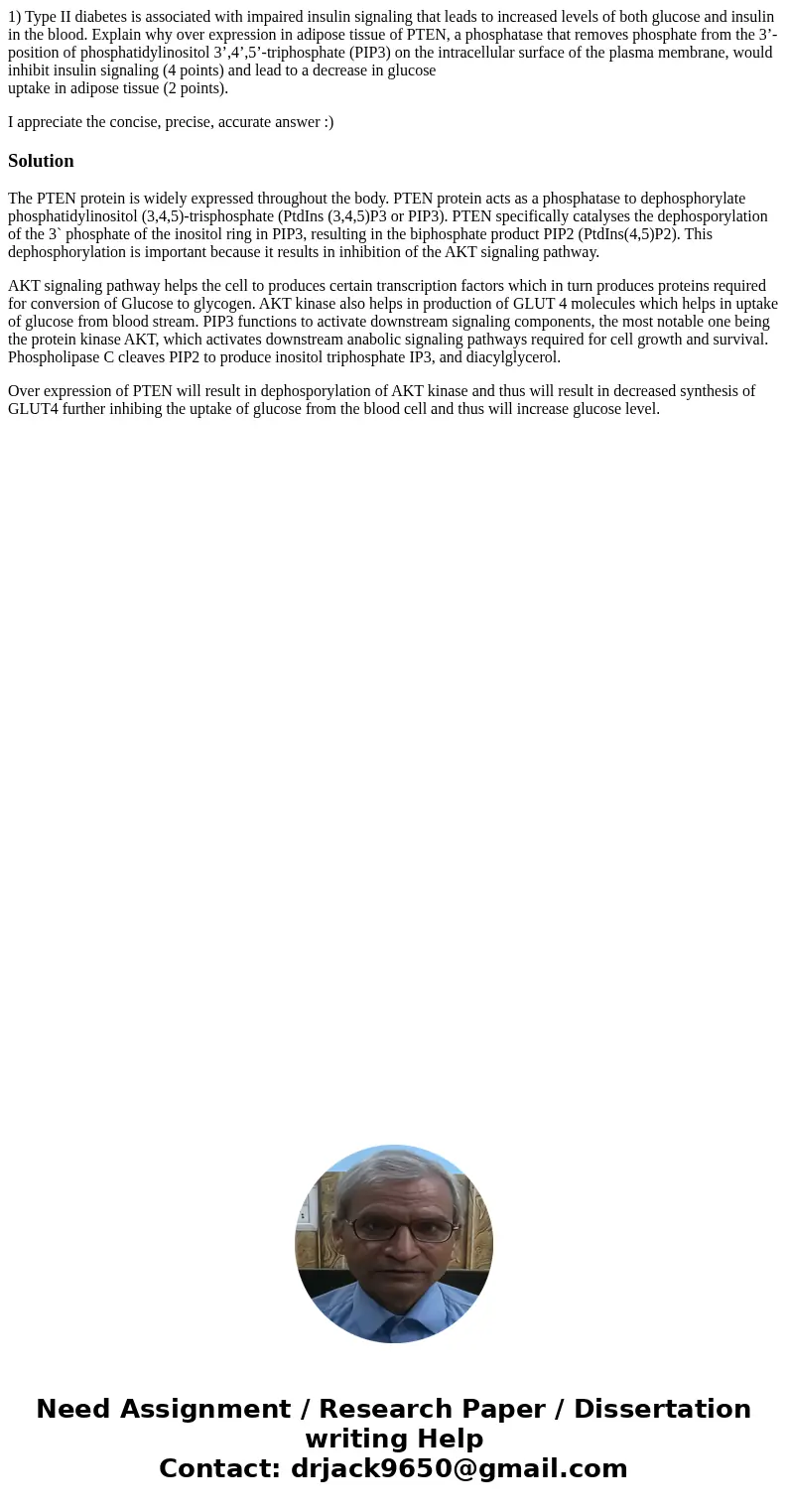1 Type II diabetes is associated with impaired insulin signa
1) Type II diabetes is associated with impaired insulin signaling that leads to increased levels of both glucose and insulin in the blood. Explain why over expression in adipose tissue of PTEN, a phosphatase that removes phosphate from the 3’-position of phosphatidylinositol 3’,4’,5’-triphosphate (PIP3) on the intracellular surface of the plasma membrane, would inhibit insulin signaling (4 points) and lead to a decrease in glucose
uptake in adipose tissue (2 points).
I appreciate the concise, precise, accurate answer :)
Solution
The PTEN protein is widely expressed throughout the body. PTEN protein acts as a phosphatase to dephosphorylate phosphatidylinositol (3,4,5)-trisphosphate (PtdIns (3,4,5)P3 or PIP3). PTEN specifically catalyses the dephosporylation of the 3` phosphate of the inositol ring in PIP3, resulting in the biphosphate product PIP2 (PtdIns(4,5)P2). This dephosphorylation is important because it results in inhibition of the AKT signaling pathway.
AKT signaling pathway helps the cell to produces certain transcription factors which in turn produces proteins required for conversion of Glucose to glycogen. AKT kinase also helps in production of GLUT 4 molecules which helps in uptake of glucose from blood stream. PIP3 functions to activate downstream signaling components, the most notable one being the protein kinase AKT, which activates downstream anabolic signaling pathways required for cell growth and survival. Phospholipase C cleaves PIP2 to produce inositol triphosphate IP3, and diacylglycerol.
Over expression of PTEN will result in dephosporylation of AKT kinase and thus will result in decreased synthesis of GLUT4 further inhibing the uptake of glucose from the blood cell and thus will increase glucose level.

 Homework Sourse
Homework Sourse